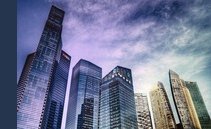To answer the question we need to start with a name: Lee Kuan Yew, the first local prime minister from 1959 to 1990. His way of governing set a precedent in Asia and beyond.

You say Singapore and you think of the luxury, the wealth, the large capitals that flow into this 734 square kilometer strip of land where just over 5.6 million people live - and almost 300 thousand millionaires - who they hold, overall, a treasure worth 1.63 trillion dollars.
However, few carry out the following reasoning. Or: how did this city-state nestled in the heart of Southeast Asia become so rich? To answer the question, we need to start with Lee Kuan Yew, the first local prime minister from 1959 to 1990 and then the undisputed leader of local politics until his death in 2015. It was Lee, essentially, the man who founded modern Singapore and led its economic transformation.
Singapore, meanwhile, has little land and no natural resources. But after its independence, achieved in 1965, the former British colony was transformed into an important manufacturing and financial center. “Since 1965 we have had a united society, firmly supported by a meritocratic system, pushing for higher standards of education, higher standards of performance, and meritocracy at every level,” Lee said in 2013.
A success story
Conservatives see Singapore as a free market success story. Low taxes, few capital restrictions, and liberal immigration policies have made this strip of land one of the most cosmopolitan places on Earth. Of course, some of the largest and most strategic sectors at a national level, such as shipbuilding, electronics, the banking sector and now also private banking, have had to originate because Lee and the government specifically earmarked state funds to unlock and upgrade those areas. The authorities also provided social services, such as housing and healthcare, which led to a certain social peace.
The most interesting aspect, however, is the following: Singapore’s per capita GDP, now equal to approximately 88 thousand dollars, has doubled in real terms in the last 20 years. At the time of its independence, the country was poorer than South Africa or Jordan. Over the last two decades, the Economist added, the average salary for Singapore residents working full time has increased by 43% in real terms (compared to the +8% recorded in the US).
The result is that Singapore is a mature economy but which, like Japan, has seen its growth slow down; it has also had to compete with other low-wage countries that have at times emulated its economic policies. People live well in these latitudes even if the per capita GDP hides a high level of inequality that the new Prime Minister Lawrence Wong will have to try to resolve.
leggi anche
Top 10 richest people in Singapore

Singapore’s secret
In short, Singapore’s rise has been attributed to multiple factors: its advanced technological infrastructure, the availability of skilled labor, favorable immigration laws, and the efficient way in which it is possible to start new business activities. However, we can broaden the reasoning to find another essential reason behind the success of this city-state.
Singapore is strategically positioned in the middle of South-East Asia as a commercial and logistical hub. Just to give an example, ships transporting oil from the Middle East to East Asian countries must pass through the Strait of Malacca; Furthermore, they cannot make the entire trip without refueling.
Therefore, Singapore is naturally well-positioned to be a trading hub for container ships. If we consider not only the geographical position but also the political stability and the economic modus operandi of the government, the answer to the initial question about why this city-state is so rich becomes quite simple.
Original article published on Money.it Italy 2024-07-19 06:54:00. Original title: Come ha fatto Singapore a diventare così ricca?




